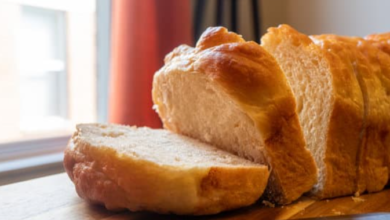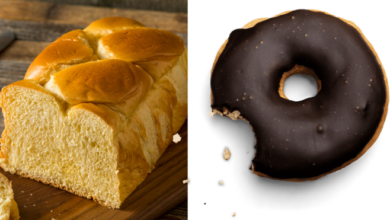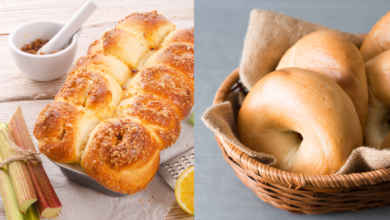Brioche Vs Regular Bun: What’S The Winner?
What To Know
- In the realm of baked goods, the brioche and the regular bun stand as two distinct and delectable options.
- Regular buns have a more neutral flavor profile, lending themselves well to a wide range of toppings and fillings without overpowering the overall taste.
- Brioche can be reheated in a preheated oven at 350°F (175°C) for 5-10 minutes, or in a toaster oven until warmed through.
In the realm of baked goods, the brioche and the regular bun stand as two distinct and delectable options. Both offer unique textures, flavors, and culinary uses, leaving bread enthusiasts perpetually pondering: which reigns supreme? This comprehensive guide will delve into the intriguing world of brioche vs. regular bun, exploring their similarities, differences, and the factors that determine their suitability for various culinary creations.
Texture and Composition
Brioche: Brioche dough is characterized by its incredibly soft and fluffy texture, achieved through the incorporation of a generous amount of butter and eggs. The high fat content creates a rich, buttery crumb that melts in the mouth.
Regular Bun: Regular buns, on the other hand, have a denser, chewier texture. They typically contain less butter and eggs, resulting in a more straightforward bread-like consistency.
Flavor Profile
Brioche: Brioche boasts a delicate, slightly sweet flavor with subtle notes of butter and vanilla. Its rich texture complements both sweet and savory fillings, making it a versatile culinary canvas.
Regular Bun: Regular buns have a more neutral flavor profile, lending themselves well to a wide range of toppings and fillings without overpowering the overall taste.
Culinary Applications
Brioche: Brioche’s soft and buttery texture makes it an excellent choice for French toast, bread pudding, and pastries. Its delicate flavor allows it to pair well with both sweet and savory fillings, such as fruit, chocolate, or cheese.
Regular Bun: Regular buns are versatile and can be used for a variety of purposes, including hamburgers, hot dogs, sandwiches, and sliders. Their neutral flavor profile allows them to complement a wide range of fillings and toppings.
Appearance
Brioche: Brioche buns are typically round or oval in shape and have a golden-brown crust. They often have a distinctive “crown” or “button” on the top, formed by the risen dough.
Regular Bun: Regular buns come in various shapes and sizes, including round, square, or oblong. Their crust is typically a lighter brown color and does not have the same pronounced crown as brioche.
Nutritional Value
Brioche: Brioche is generally higher in calories, fat, and carbohydrates than regular buns due to its higher butter and egg content. It also contains a moderate amount of protein.
Regular Bun: Regular buns are typically lower in calories, fat, and carbohydrates than brioche. They are also a good source of fiber and protein.
Which Bun to Choose?
The choice between brioche and regular bun ultimately depends on the intended culinary application and personal preferences.
- For a soft, buttery, and flavorful bread: Brioche is the clear winner.
- For a neutral-flavored, versatile bun: Regular bun is the better option.
- For French toast or bread pudding: Brioche is highly recommended.
- For hamburgers or hot dogs: Regular bun is the traditional choice.
- For sandwiches or sliders: Both brioche and regular bun can be used, depending on the desired flavor and texture.
The Verdict
Brioche and regular bun are both delectable bread options with distinct characteristics. Brioche offers a luxurious, buttery texture and delicate flavor, while regular bun provides a more straightforward bread-like experience. Ultimately, the choice between the two comes down to personal preferences and the specific culinary application.
Answers to Your Most Common Questions
1. Is brioche healthier than regular bun?
No, brioche is generally higher in calories, fat, and carbohydrates than regular bun.
2. Can I substitute regular bun for brioche in recipes?
Yes, but the texture and flavor of the dish may be different.
3. What is the best way to store brioche?
Brioche should be stored in an airtight container at room temperature for up to 3 days.
4. Can I freeze brioche?
Yes, brioche can be frozen for up to 3 months. Thaw it at room temperature before serving.
5. How can I reheat brioche?
Brioche can be reheated in a preheated oven at 350°F (175°C) for 5-10 minutes, or in a toaster oven until warmed through.




